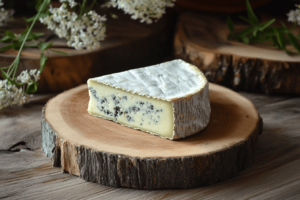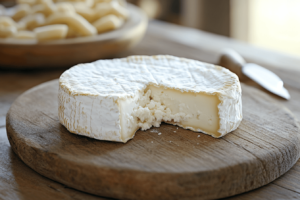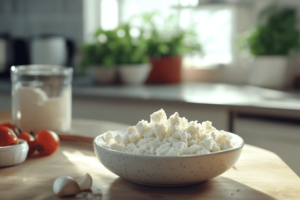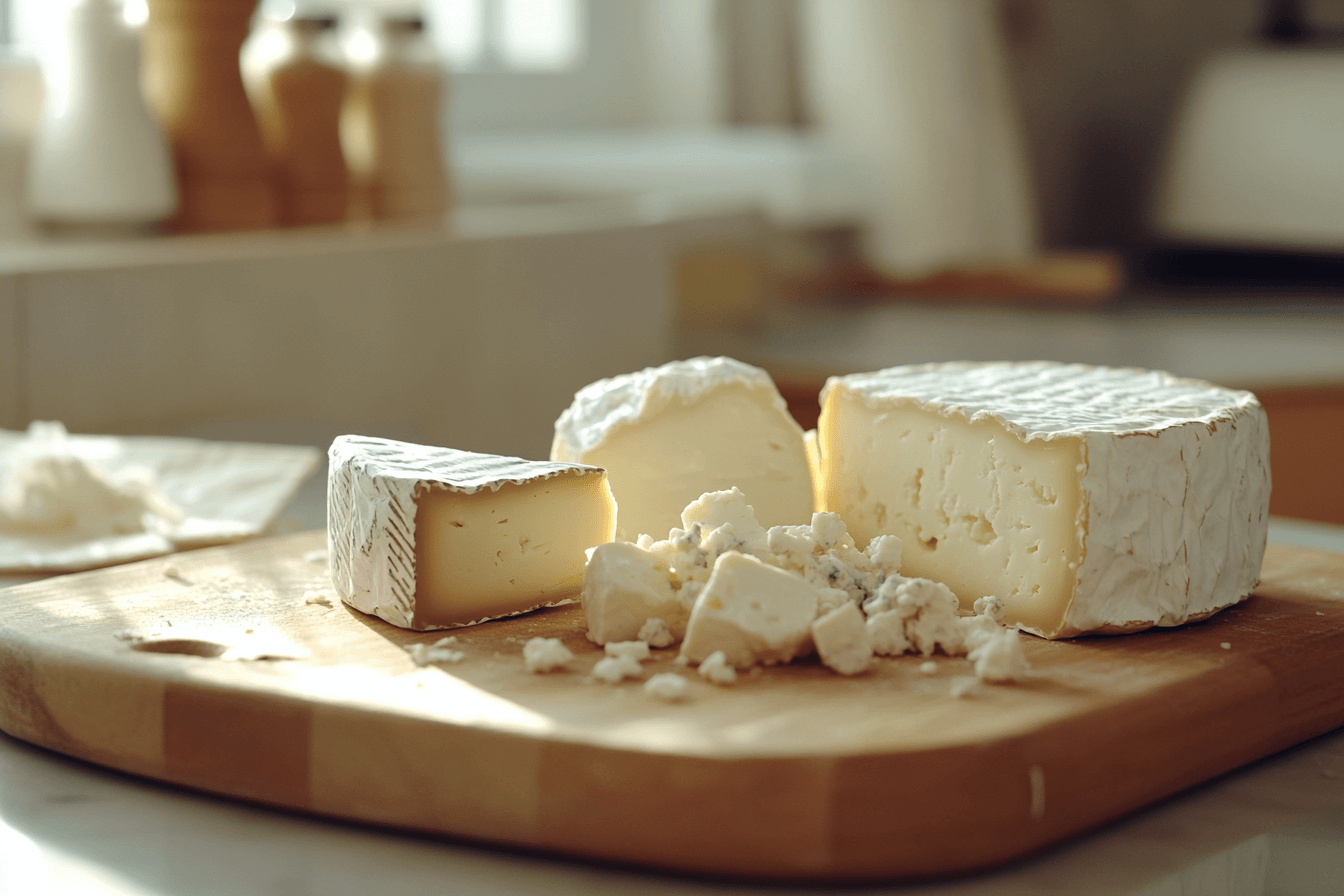Introduction
Creamy mac and cheese is a beloved dish in the United States. Many of us grew up enjoying this warm bowl of comforting pasta. It is quick, it is tasty, and it is flexible enough to fit everyone’s taste buds. Yet, people often ask: What cheeses are not to use for mac and cheese? This question arises because some cheeses do not melt well, while others simply clash with the overall flavor.
In this article, we will explore which cheeses fail to deliver the smooth, velvety texture that you expect in a perfect mac and cheese. We will also discuss why certain cheeses bring overpowering or mismatched flavors that make the dish less pleasant. Furthermore, we will look at ingredients that may keep mac and cheese from reaching its full potential. By the end, you will know exactly which options to avoid, and why sticking to tried-and-true varieties yields the best mac and cheese possible.
But first, let us take a quick look at what makes mac and cheese such a favorite. Most people love it for its hearty texture and comforting taste. Whether you pair it with barbecue or enjoy it alone, mac and cheese fits any meal. However, if you use the wrong cheese, you can ruin that creamy consistency. As a result, you might end up with a gritty, runny, or stringy sauce that fails to satisfy.
Moreover, selecting the right cheese ensures a well-rounded flavor. Certain cheeses are mild, while others are pungent or salty. Of course, creativity in the kitchen is good. But you do not want to ruin a classic dish like mac and cheese by picking something that throws off the balance. In the sections below, we will uncover which cheeses to avoid for mac and cheese, discuss why they cause problems, and then show you alternative cheeses that yield better results.
Keep reading as we shed light on the top offenders. We will also explain the reasons to steer clear of them. You will discover how certain specialty cheeses can overpower your mac and cheese. Additionally, we will discuss how not all processed or shredded cheeses are created equal. Finally, we will provide a helpful FAQ and a concise conclusion to tie everything together. Our goal is to help you craft a perfect bowl of mac and cheese every time.
What Cheeses Are Not to Use for Mac and Cheese?
When you think about a gooey, rich sauce covering your noodles, you can probably already imagine cheddar or a mild melting cheese. But what cheeses are not to use for mac and cheese if you want a smooth, comforting result? The truth is that some cheeses break apart when heated. Others have a flavor profile that clashes with the creamy sauce.
Why Certain Cheeses Fail to Deliver the Right Texture
At the heart of mac and cheese lies a smooth sauce. This quality comes from how the cheese melts into the milk or cream. If a cheese does not melt well, you will find lumps or strings instead of the desired velvety consistency. Cheeses that are too soft may turn watery. Moreover, cheeses that are too hard can stay clumpy or even get grainy. For these reasons, picking a cheese with moderate moisture and good melting properties is key.
Flavor Mismatches That Lead to Disappointment
Texture is not the only factor to consider. If a cheese’s taste is too strong, it may dominate the dish. Some cheeses are quite pungent or have a sharp tang that overshadows the mild cream sauce. On the other hand, some cheeses have a sweetness that may not pair well with the savory notes of mac and cheese. Although variety is the spice of life, it can be risky to use a cheese that conflicts with the overall flavor.
Cheeses You Should Avoid for Mac and Cheese
Below, we will cover some prime examples of which cheeses are not good for mac and cheese. Each one has unique reasons why it may not be the best choice. We will also suggest alternatives and offer tips to keep your pasta dish delicious. Remember, while you can experiment with many cheese combos, it helps to know which ones are notorious for making mac and cheese less appealing.
Blue Cheese: Strong, Pungent, and Overpowering
Blue cheese is a polarizing ingredient. Some people love its sharp aroma, while others cannot stand the pungent smell. Yet, even if you enjoy it on a cheese board, you might want to keep it out of your mac and cheese.
Blue cheese has mold veins that create a tangy punch. Its distinct flavor can quickly take over any dish. When used in mac and cheese, it can drown out other flavors, making every bite taste mostly of that signature funk. Moreover, it does not melt into a smooth sauce as readily as milder cheeses do. Although it may soften, it often leaves a somewhat grainy mouthfeel.

If you adore blue cheese, try combining a tiny amount with more neutral cheeses like mozzarella or mild cheddar. That way, you balance the distinctive flavor. But in most cases, blue cheese on its own is best saved for a salad topping or a gourmet burger rather than a creamy pot of macaroni.
Goat Cheese: Too Tart and Too Soft
Goat cheese, also known as chèvre, has a tangy flavor and a soft, crumbly texture. Many people enjoy its bright taste on pizza or in salads. However, it is often too tart for mac and cheese. While a little tang can be nice, goat cheese can bring an acidic edge that may not pair well with the mild creaminess of your sauce.

Moreover, goat cheese can be quite soft. Instead of melting into a smooth sauce, it can become a bit gritty. Its moisture content also varies, so you might end up with extra liquid in your dish, diluting the flavors and creating a runny sauce.
If you like the taste of goat cheese, you can experiment by mixing a small amount into a blend that includes cheddar or Monterey Jack. Still, proceed with caution. A little goes a long way, and too much could throw off the entire flavor balance.
Ricotta Cheese: Grainy Texture and Mild Flavor
Ricotta is a popular cheese in Italian cooking. It often stars in dishes like lasagna or cannoli. Yet, when it comes to mac and cheese, it may not be the best match. Ricotta has a grainy texture that can remain noticeable even after cooking. This texture contrasts with the desired silky finish of classic mac and cheese.
Moreover, ricotta’s flavor is quite mild. Though sometimes mild can be good, ricotta lacks the rich, savory punch that people crave in mac and cheese. In fact, adding ricotta often leads to a diluted taste, forcing you to rely heavily on salt or other ingredients to bring in more flavor. While you could blend it with sharper cheeses, you risk creating lumps and losing the smooth consistency that makes mac and cheese so appealing.
Feta Cheese: Salty and Crumbly
Feta is another cheese beloved in Mediterranean dishes. Its bright, tangy notes and crumbly nature add flair to salads and roasted veggies. Yet, because of its intense saltiness, it can clash with the creamy sauce in mac and cheese. Often, you will find that the salt overshadows the more mellow flavors.

Additionally, feta does not melt into a smooth sauce. Instead, it tends to remain in small chunks. This results in a dish that lacks the uniform creaminess that mac and cheese fans love. Even if you try to dissolve it, its crumbly nature means it will never fully blend. If you want a tangy cheese in your mac and cheese, consider a small dose of goat cheese or even a low-moisture mozzarella with a bit of tang instead of feta.
Brie Cheese: Too Creamy and Delicate
Brie is a soft, creamy cheese that many people enjoy baked or spread on crackers. Its rind, along with its buttery center, offers a rich mouthfeel. At first glance, you might think this would work well in a mac and cheese sauce. However, the high moisture content in Brie can make your dish too runny, especially if you do not remove the rind.
Brie also has a subtle, almost mushroom-like nuance that might not match the traditional taste of macaroni and cheese. While it does melt better than some other cheeses on this list, the end product can be overly creamy and lacking the classic bite that cheddar delivers. If you still want to experiment with Brie, remove the rind and mix it with a sharper cheese to offset its mild sweetness.
Camembert Cheese: Similar Challenges to Brie
Camembert is a close cousin to Brie, sharing many of its creamy, buttery traits. It also has a rind that can bring a mushroomy flavor to your dish. Because it is soft and high in moisture, you may end up with a sauce that is too thin. Additionally, Camembert’s unique taste can overpower the simple, comforting notes that most people want in mac and cheese.
If you decide to try Camembert, be sure to mix it with a sturdier cheese to keep the sauce thick. However, most home cooks find that Camembert alone is not the best option. Though delicious on a cheese platter, it might not offer the texture and flavor you need for a bowl of classic mac.
Extremely Aged Cheeses: Tough Textures and Dominant Flavors
Some cheeses, like extra-aged cheddar or aged gouda, grow harder and sharper as they mature. While cheddar is commonly used in mac and cheese, extremely aged versions can create problems. They may not melt as easily, often resulting in a gritty texture. Their strong flavors can also be overwhelming.
Aged gouda, for example, can have crystal-like bits that might feel strange in your sauce. Similarly, aged parmesan is usually better served grated on top of pasta rather than melted into the sauce. If you want to use a more mature cheese, blend it with a milder cheese so the overall texture does not suffer.
Highly Processed Cheeses: Quality Concerns
Cheap processed cheeses might seem appealing due to their low cost and convenience. Yet, they can have high amounts of fillers, stabilizers, and preservatives. These additives can yield a sauce that tastes artificial or chalky. In some cases, processed cheese lacks the full-bodied flavor of real cheese.
Additionally, these products may leave a waxy coat in your mouth. While many processed cheeses do melt well, their texture and taste often fall short of the quality you get from fresh cheese. If you want a classic mac and cheese that tastes homemade, consider using real cheddar or a similar melting cheese instead. If you must use a processed variety, search for higher-quality options that contain more cheese than additives.
Pre-Shredded Cheese: Why It Is Not Ideal
You may have seen many recipes urging you not to use pre-shredded cheese for mac and cheese. Although this is still cheese, the issues lie in the added anti-caking agents like cellulose powder. These extra ingredients keep the cheese from clumping in the bag. However, they can hamper smooth melting. In turn, you might end up with a sauce that has lumps or a grainy feel.
Freshly shredding or grating your cheese, on the other hand, ensures better melting. It also often leads to a richer flavor, since bagged cheese can lose some of its taste over time. If convenience is key, you can buy a block of cheese and shred it in larger batches. Then, store the extra shreds in an airtight container. This small effort can make a big difference in your finished dish.
Balancing Flavors: Avoiding Unwanted Combinations
Sometimes, you might pick two or more cheeses that seem great on their own, yet they clash when combined. For instance, mixing an extremely salty cheese with an acidic one can create an odd taste. Likewise, pairing multiple strong cheeses may overwhelm your mac and cheese. Thus, if you want to try new blends, add them in small amounts and taste as you go. This helps you avoid a mac and cheese that is too tangy, too salty, or just plain off.
Transition words can help guide you through the process of deciding what to use. First, think about the main flavor profile you want. Next, consider the texture. Then, test a little bit of your chosen cheeses by melting them together in a small saucepan. Finally, adjust before committing to the entire dish. This step-by-step approach helps avoid waste and disappointment.
Better Cheese Choices for a Classic Mac and Cheese
Now that we have discussed cheeses you should skip in mac and cheese, let us quickly highlight what works well. Mild or medium cheddar is the gold standard. It melts smoothly, adds a sharp but not overpowering flavor, and is affordable. Monterey Jack is another good option for its mild taste and creamy texture. For a bolder twist, try a bit of pepper Jack.
Colby and Colby-Jack are also strong contenders. They melt nicely and bring a slight sweetness that pairs well with cheddar. Some people like to add a little Gruyère to create a rich, nutty undertone. Just be sure to use it in moderation, because Gruyère can be quite distinct. Another popular addition is mozzarella, which yields a stretchy, gooey consistency many people love.
By choosing the right cheeses and avoiding the pitfalls we have mentioned, you can create a mac and cheese that pleases everyone. Moreover, you can experiment with blends to find your ideal balance of flavor and texture. This approach keeps the dish interesting and delicious.
Extra Tips for a Successful Sauce
Before we move on to the Frequently Asked Questions, here are a few tips for the perfect mac and cheese:
- Create a roux: Start your sauce with a simple mixture of butter and flour. Cook it for a minute or two, then add milk slowly. This base helps the cheese melt smoothly without clumping.
- Low and slow: Avoid high heat. Melt your cheese gently to prevent separating or scorching.
- Taste as you go: Gradually add cheese, and taste the sauce after each addition. Adjust your seasonings, like salt and pepper, to suit your preferences.
- Combine textures: If you want a crispy top, add a sprinkle of panko breadcrumbs or a bit of extra cheese on top before baking. This creates a nice contrast with the creamy interior.
Following these steps will help you dodge mistakes. Equally vital is knowing what cheeses are not to use for mac and cheese, so you do not waste time or ingredients. Let us address some common questions now.
Frequently Asked Questions
What is the most disliked cheese?
Many would say blue cheese is the most disliked, due to its pungent smell and strong flavor. Some people love it, but others find it overwhelming.
Why can’t I use shredded cheese for mac and cheese?
Pre-shredded cheese often has anti-caking agents that can stop it from melting smoothly. This can lead to a grainy or uneven sauce, so using freshly shredded cheese is usually best.
What cheese is not good for mac and cheese?
Some poor choices include blue cheese, feta, goat cheese, and extremely aged varieties. They can overpower the dish or disrupt the creamy texture.
What are the three best cheeses for mac and cheese?
Cheddar, Monterey Jack, and Colby (or Colby-Jack) are tried-and-true favorites. They melt well, taste great, and do not overshadow the dish.
Conclusion
Mac and cheese is a staple for good reason. It is comforting, easy to make, and delicious. However, part of its success lies in choosing the right cheese. Now that you know what cheeses are not to use for mac and cheese, you can avoid common missteps. Instead, you can embrace cheeses that melt smoothly and taste amazing. By steering clear of overly soft, pungent, or salty varieties, you ensure a velvety sauce and balanced flavor.
Plus, we have touched on the dangers of using cheaper processed cheeses or pre-shredded cheese. While convenience is nice, investing a bit more time into hand-shredding a quality cheese can be the difference between a mediocre meal and a mouthwatering masterpiece.
Armed with this knowledge, you can confidently pick cheeses that result in a perfect mac and cheese. Remember that you can still get creative. Just begin with a good base like cheddar, and then add small amounts of other cheeses to find your personal favorite. Use transition words to move through each step and keep your process organized. Enjoy exploring new takes on this American favorite, and always remember that the key is a smooth, balanced sauce.

